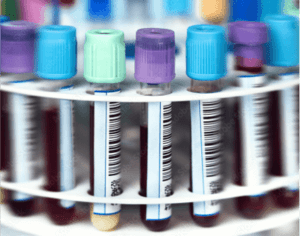Tools for Doctor’s Visits
Feel Prepared: What to Know Before You Go
“You have a blood clot.”
Hearing these words from your healthcare provider can be shocking—and scary. You may be thinking: Blood clots can break loose and go straight to your lungs, causing sudden death, right? Can’t they cause strokes or heart attacks? Yes, but not always. In most cases, clots can be treated successfully without long-term problems. So before panic sets in, let’s learn about blood clots!


Understanding Your Thrombosis Diagnosis
After diagnosis, first find out whether your clot is in an artery (vessels that carry blood away from the heart) or a vein (vessels that carry blood back to the heart from legs, arms, abdominal organs and brain). Clots in arteries may lead to stroke, transient ischemic attack (TIA or mini stroke), heart attack and other conditions. Clots in veins may lead to deep vein thrombosis (DVT) and pulmonary embolism (PE), together referred to as venous thromboembolism (VTE). Most commonly, a DVT occurs in a leg, but it can occur anywhere in the body, including an arm(s), abdomen and around the brain. A PE is a potentially life-threatening complication of DVT, and occurs when a blood clot breaks off, travels through the bloodstream and lodges in the lung.
Diagnosis of DVT, PE or VTE is a lot to deal with for a patient, not just physically, but also emotionally. Find more information below.
Thrombophilia Testing
Thrombophilia testing is a set of blood tests to look for inherited conditions that are associated with an increased risk of venous thromboembolism (blood clots). The tests should include testing for Factor V Leiden, prothrombin G20210A gene mutation, and deficiency of antithrombin and Protein C and Protein S.
Those patients who have had an unprovoked venous thromboembolism and have a family history of blood clots that have occurred below the age of 50 should be included. Other situations are controversial.
Know Thrombosis
Blood clots affect people of all ages, races and ethnicities, and occur in both men and women. Certain factors and situations can increase the risk of developing a blood clot(s). Learn more about blood clots below.
Visiting the Emergency Department
Taking a trip to the emergency department is stressful and potentially costly depending on where you live – but it can be lifesaving. For patients with a DVT or a PE, it is especially important to receive treatment in a timely manner.
If you suspect that you have a blood clot or experience any of the signs and symptoms, you should consider going to the emergency department or contact your healthcare professional as soon as possible.
The Bottom Line: Take your symptoms seriously. The emergency department is there to help you in times of need. It is always better to make the trip and have a blood clot ruled out than to stay home and potentially have complications.
Looking for Support?
There are hundreds of patient advocacy groups globally for people who have been diagnosed with a blood clot, most of which are World Thrombosis Day partner organizations. We recommend visiting the following to get started:
- Thrombosis UK
- Thrombosis Ireland
- National Blood Clot Alliance
- North American Thrombosis Forum
- Thrombosis Canada
- Anticoagulation Forum
If your advocacy group would like to be included on this list, email us at wtd@isth.org. You can also reach out to your local hospital system and join or follow patient / survivor groups on Facebook, Twitter, Instagram, TikTok and Pinterest.
Follow World Thrombosis Day on social media to stay connected:
Mindfulness and Meditation
People have been meditating for thousands of years, often as part of a spiritual practice. But in more recent years, mindfulness has become a popular way to help people manage their stress and improve their overall well-being — and a wealth of research shows it’s effective. Psychologists have found that mindfulness meditation changes our brain and biology in positive ways, improving mental and physical health.
Meditation can be defined in many ways. But a simple way to think of it is training your attention to achieve a mental state of calm concentration and positive emotions.
Mindfulness is one of the most popular meditation techniques. It has two main parts: attention and acceptance.

